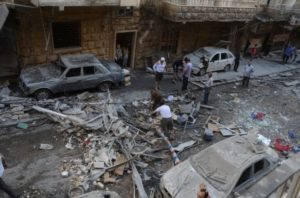By Shannon Emmett
The Syrian city of Aleppo has an ancient history dating back to 20th century BC. Prior to the civil war, it was Syria’s largest city and financial and industrial center, but since violent uprisings against President Bashar al-Assad began five years ago, the city has suffered enough violence that it is now smaller than the capital city of Damascus. Since rebels attempted to overthrow government control in Aleppo in July 2012, the ancient city has been divided into government opposition and loyalists.
Government troops severed rebel transportation into the beloved city by closing the vital Castello Road. This road blockade prevents 300,000 residents of the rebel occupied east from traveling into the divided northern part of the city.
In response to the government’s effort to regain control over rebel-held territory in Aleppo, over 300 shells were fired on Aleppo’s western front by rebel forces on Monday morning. 8 were killed in the attack and dozens more were injured amidst the destruction of several residential areas.
Both sides are hungry for control over Aleppo- Assad and his supporters, including Moscow, Iranian troops, and Lebanese Hezbollah fighters feel the battle in Aleppo is critical in defending the capital city of Damascus as well, and a victory would be a powerful demonstration of the government’s might. Rebel forces would undoubtedly weaken if unable to recover access to Castello Road due to limited travel between their occupied territories in Aleppo.
The rebel attack on Monday was met with unprecedented firing from the government and air coverage by Russian forces. This violence marks the end of a 72 hour ceasefire, which was likely not taken seriously by rebel forces given that the closing of Castello Road occurred during the previous ceasefire. As the once glorious city of Aleppo crumbles in wake of conflict, its conquering will surely be a turning point in the ongoing Syrian civil war.

